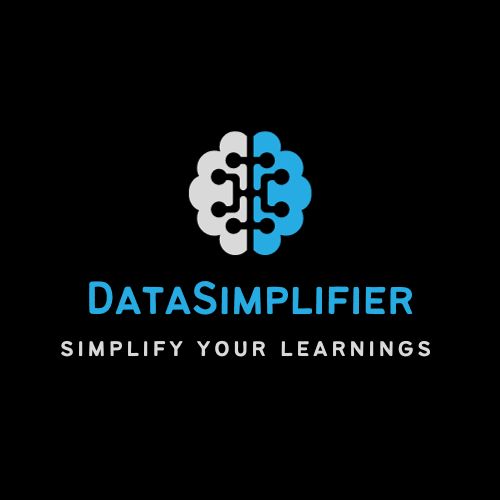Introduction
Data analysis skills are valuable in the fast-changing world of data science. For Indian students and professionals who prepare for roles in data analysis, machine learning, or business analytics, mastering data analysis techniques is essential. But one of the biggest challenges on this journey is avoiding common mistakes that can lead to unreliable results and costly errors. It therefore deals with the essential concepts of data analysis and interpretation in statistics, enumerating most of the pitfalls on which most people err.

Technical terms in analyzing data become overwhelming through their complicated statistical formulas that one encounters in trying to put the right interpretation on results. Most data enthusiasts even at professional levels are lost trying to explain what separates concepts of odds and risk from a logistic regression or why any body should care about agreement measures. Such awareness and solution for such problems are crucial if they are to gain clarity and precision that makes successful projects flourish.
This guide is very practical in offering advice, techniques, and takeaway lessons on avoiding mistakes during data analysis. Knowing pitfalls will help you learn how to sidestep them and become even stronger in your data science foundations while having confidence in how to solve data-driven problems. Let’s get into the meat of things now!
I. Data Analysis Pitfalls: Avoiding Common Missteps
Lack of Clear Objectives
Explanation: The most common error that is made while handling data analysis is starting directly into the data without any target objective. A purposeless data gathering leads to irrelevant findings and squandering of resources. An organization may be interested to know about customer satisfaction but might not have clear objectives for what they want to achieve this about perhaps retention or services.

How to Avoid: Begin by framing very specific questions or hypotheses, such as “How do customer satisfaction affect repeat purchases?” This clear definition guides your analysis toward feasible output. Look to define both your key and ancillary objectives before beginning to make things easier.
Overlooking Data Quality Checks
Explanation: The quality of the data determines how good the insights are. Issues such as null values, duplicates, and anomalies can skew the results. Missing values can make an uncorrected analysis on an entire dataset incorrect or leading to misleading conclusions.
How to Avoid Begin with a thorough data cleaning phase. Making use of mean or median imputation for missing values as the situation applies, or more advanced techniques such as KNN imputation. Removing duplicates and normalizing inconsistent data formats will ensure that your data is consistent, reliable, and ready for analysis.
Insufficient Sampling and Bias
This explains sampling bias as a tendency to take a sample from which analysis is to be performed; such a sample does not give reflection on the rest of the population.
For instance, take an example of taking a poll on customer satisfaction and collecting responses only from one section, such as only from urban users, whereas there may be other sections with respect to location that may not necessarily participate in the poll or poll survey.

How to Avoid: Use random sampling and ensure that the sample is diversified. For large datasets, use stratified sampling to include all the key demographics. Also, calculate the required sample size to avoid under-sampling or over-sampling, which may bias your results.
II. Statistical Analysis Pitfalls: Avoiding Errors in Interpretation
Misinterpreting Correlation and Causation
Explanation: The presence of two correlated variables makes one infer that one is a cause of the other. For example, the number of drownings can be said to correlate with ice cream sales. This means that both increase together on hot weather days. Nevertheless, people who are consuming ice cream are not the cause of the increase in drowning incidences because both happen when it is hot.
Avoid: Interpret correlation only as an association, not causation. For relationships where causation matters most, think of experiments or employ causal inference models such as difference-in-differences, which can help separate the effect of one variable from another.
Neglecting Logistic Regression Specifics
Explanation: Logistic regression remains one of the most popularly used models in binary classification problems, though very often miscoded. An example common misconception is the difference between “odds” and “risk.” In a medical study, the odds may refer to the ratio of smokers who got lung disease, whereas “risk” would concern the actual probability.
How to Avoid: First of all, have a good definition of your terms. Chances are the probability of an event actually happening versus not happening at all, whereas risk is the likelihood of the event occurring given a population. This helps remove misinterpretation in subjects such as healthcare and more so in risk assessment.
Misapplied Correlation Techniques
Explanation: The most common error is the inappropriate use of correlation technique. For example, Pearson’s correlation is suitable for linear relationships with normally distributed data but may be misleading if applied to skewed or ordinal data.
Avoid This If You Know the different methods used in correlation. Spearman’s correlation is applied with ordinal data or when in cases of non-linear relationship whereas Kendall’s Tau for rank-based comparison in smaller samples sets. The accuracy in this method improves the accuracy of a resultant.
Misinterpretation in Statistical Measures of Agreement
Explanation: The most commonly used statistical measures when there is need to determine agreement between two raters or two rating instruments, particularly with research that meets the standards to qualify an assessment. Their misinterpretation will present a misleading image about the result’s reliability.
How to Avoid: Beyond simple accuracy, involve statistical measures that quantify agreement. For example, this is perfect for binary classification as it involves Cohen’s Kappa. With multiple raters, the best choice is Fleiss’ Kappa. Take these results to prove the reliability of your answer.
III. Avoiding Pitfalls in Visual and Communicative Aspects of Analysis
Poor Data Visualization
Good visual representation of data is a path towards better insight communication. Whereas disorganized or confusing presentations evoke confusion and sometimes miscommunication. For instance, it hides the real pattern while the pattern that the data follows as analysis is done through the help of a pie chart.

Avoid how to do
Choose an image that gives a presentation of the data. Show trends using line charts. Comparing things are done on bar charts, and establish relationships by making use of scatter plots. Take into account who you are speaking to and try simple and intuitive presentations where things will easily pop out of it. Apply tools from Tableau or even making use of Matplotlib/ Seaborn to create perfect views.
Failure to Consider Your Audience’s Background
Explanation: Data analysis results are typically shared with stakeholders who have diverse technical backgrounds. Technical information without context can be very off-putting to a non-technical audience and leads to less engagement.
How to Avoid: Customize your presentation based on the background of your audience. If your audience is technical, then you will have to go into detail regarding the methods and statistical tests you used. For a non-technical audience, you would need to simplify the explanations and emphasize actionable insights. In this way, your analysis is both accessible and effective.
IV. Errors in Statistical Testing and Interpretation
Statistical Power and Sample Size Not Used
Explanation: For any test to be valid, one needs to take into consideration the statistical power and an adequate sample size. Running tests with small sample sizes renders them inconclusive or wrong, wasting precious time and resources.
How to Avoid: Always calculate the sample size required before conducting your analysis. Online calculators and software like G*Power help in determining sample size so that the test will not be invalid.
P-Hacking and Misleading Significance Levels
Explanation: P-hacking is the act of fiddling with the data until it returns something that is statistically significant. This is a huge problem because running multiple tests on the same set of data increases the probability of getting a “significant” result by chance alone and yields false positives.
How to Avoid It
One is avoiding drawing inferences that go far away from what the original hypothesis set; and it’s avoiding running the test with the data repeatedly because tests were unnecessarily done. Ways to recover multiple comparison errors through method, say Bonferroni method when several tests need to be made; this helps to limit Type I errors and ensure integrity with data
Overreliance on Statistical Significance
Explanation: Statistical significance (p-value) does not necessarily equate with practical significance. For example, a p-value may say that something is significant in a big dataset, but the effect size may be too small to matter practically.
How to Avoid: Pair p-values with effect size or confidence intervals to assess practical significance. That way, you will gain a more holistic view of what your data might have in it and avoid overly optimistic conclusions.
Conclusion
Mastering data analysis and statistical interpretation requires vigilance to common pitfalls that could compromise your work’s quality. Focus clearly on objectives, maintain superior data quality, use appropriate statistics techniques, and use visualization best practices to build up trust in your findings toward meaningful contributions in your own field.
Such students and professionals, with regard to developing deep expertise in the field of data science, should join one as such. Want to know how to analyze data or gain appropriate statistical techniques or explore an opportunity in the data sciences? Then you’re absolutely welcome here.
Join our privileged Telegram channels: we facilitate groupings of different niches so that you get access to the latest job postings in one place, industry news for being updated, and resource training for skill building. And as a special bonus for reaching the end of this guide, comment your Telegram handle below and we will send you an invite to our premium Telegram group where a supportive community awaits to help you grow and succeed.
Remember that every step of data analysis, from cleaning data to testing for statistics, is a skill-building opportunity. Staying vigilant of these pitfalls and constantly improving, you are
Share the post with your friends

1 thought on “Common Mistakes in Data Analysis – Here the 4 common pitfalls and best tips”